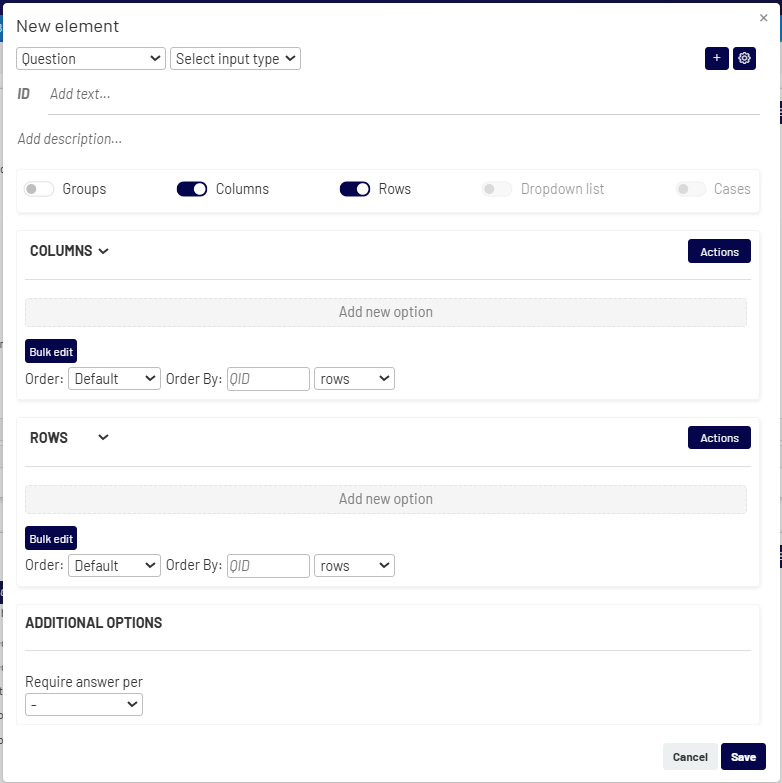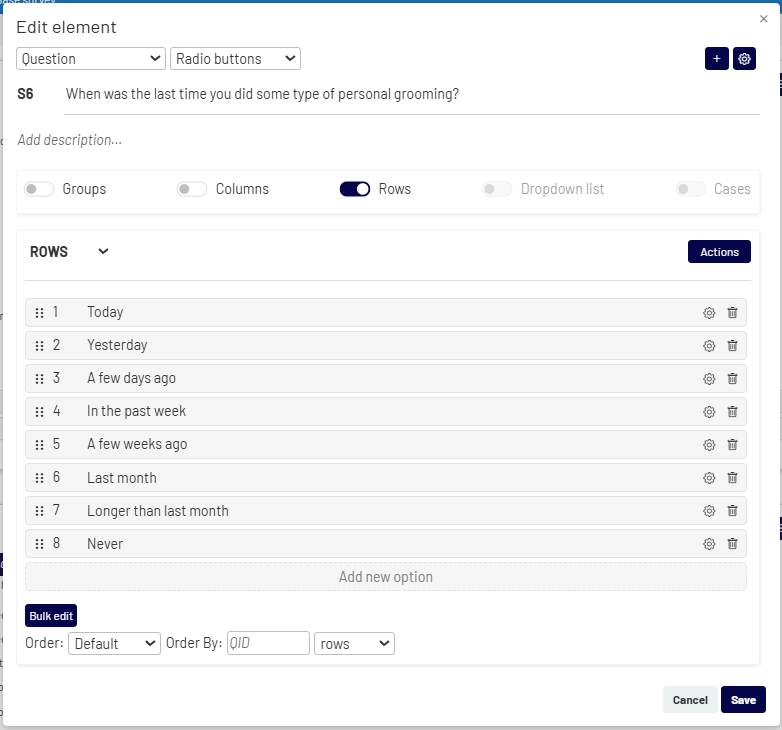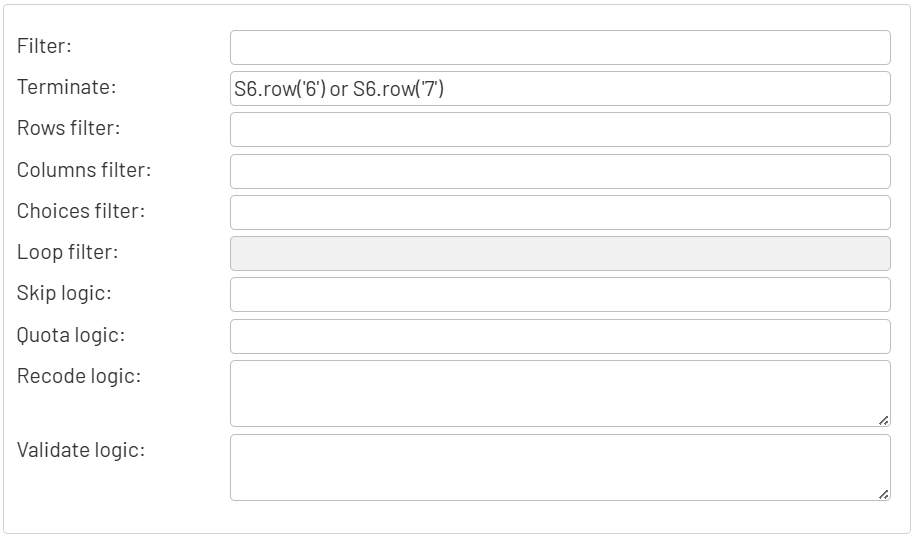Once you are in the Survey Editor, you have full control over every element in your survey. An element can be a question, a logic block, a reusable list, and more.
1. Adding a New Element #
To add a new element to your survey, hover your mouse between two existing elements and click the + button that appears. This will open the New element window.

Your first step is to choose the Element type from the dropdown menu. The most common types include:
- Question: For standard question types like multiple choice, text, or number entry.
- Hidden question: For creating background variables or recoding data.
- Logic: For setting up conditional paths in your survey.
- Section/Loop: For grouping questions that can be looped.
- Custom module: For complex, pre-configured research exercises.
- Reusable list: To define a list of items (e.g., brands) that can be used in multiple questions.
2. Editing an Element #
To modify an existing element, click the Edit icon ![]() in its toolbar. This will open the detailed Edit element window.
in its toolbar. This will open the detailed Edit element window.

This window is your primary tool for configuring questions and has several key sections:
A. Question Text and Type
- Question ID and Text: At the top, you can define the question’s unique ID (e.g., Q1) and write the question text.
- Question Type: Change the input method (e.g., from Radio buttons to Checkbox or a Number input) using the dropdown menus.
- Add description…: Add optional helper text or instructions that will appear below the question for the respondent.
B. Answer Options (Rows, Columns, etc.)
This is where you define the answer choices for your question. You can enable different types of lists depending on the question format:
- Rows: The most common type, used for the answer options in single-choice or multiple-choice questions.
- Columns: Used to create grid or matrix-style questions where respondents rate rows based on columns.
- Dropdown list: Use this for questions with a long list of answers that you want to appear in a dropdown menu.
For each answer list, you can:
- Add new option: Manually add a new answer choice.
- Bulk edit: Add or paste a large list of options at once.
- Set Order: Control the display order (e.g., default, random, rotate).
- Configure Individual Options: Click the settings icon
 next to any answer to set specific properties like making it exclusive or an anchor.
next to any answer to set specific properties like making it exclusive or an anchor.
C. Question-Specific Settings
Depending on the question type, additional option panels will appear:
- Number Options: For numeric questions, you can set a required range (min/max), force the sum of all inputs to equal a specific value, and allow or disallow decimals.
- Additional Options: For multiple-choice questions, you can set the minimum, maximum, or exact number of required selections.
D. Advanced Logic
To access advanced logic and conditions, click the Settings icon ![]() at the top right of the Edit window. This will open a new view where you can apply complex rules.
at the top right of the Edit window. This will open a new view where you can apply complex rules.

Here you can set conditions for when the question should be shown (Filter), when it should terminate the survey (Terminate), and apply other advanced logic.